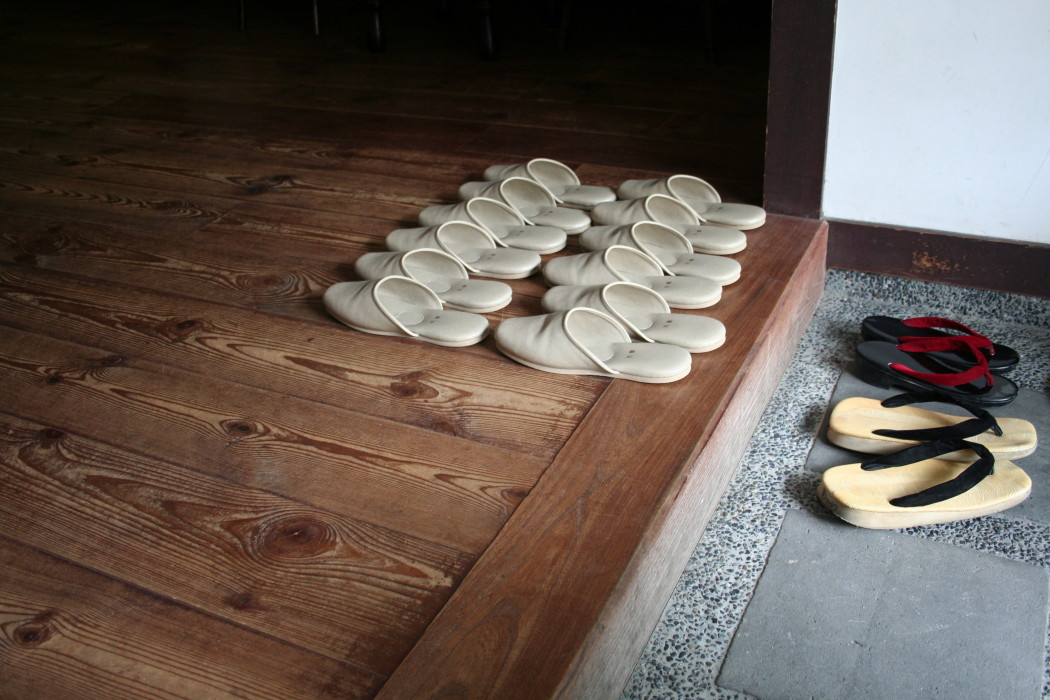Getting by safely and without offending cultural sensibilities in South Korea and Colombia needs different sets of rules. Here are the rules I think anyone moving to these countries should know.
Do’s and Don’ts in South Korea
There is a rigid social hierarchy and etiquette that locals follow. You may get some leeway as a foreigner, but there are some things to keep mind:
-

Removed shoes when entering a Korean home
Don’t point with your chopstick at the table. Don’t leave anything on your plate after a meal.
- When you are introduced to someone new, wait to be introduced rather than doing so yourself, especially in the business sphere.
- When going out for a meal with colleagues or acquaintances, let the most senior persons find their seats first, and then you take yours. Also wait for them to begin eating before you do.
- Do bring gifts when you visit someone’s home, but don’t make it too expensive since it’s likely to be reciprocated. Fruit, chocolates or flowers are fine.
- Always remove your shoes when you enter a Korean home. Your host may offer you slippers to wear in the house. You could wear your socks, if you wanted. In some restaurants, you may have to enter with your socks as well.
- When you’re offered someone’s business card, do take it carefully and examine it before pocketing it.
- Don’t point with your hands. It’s rude. Always pass or accept anything with your right hand, your left arm supporting your wrist or forearm. You’ll probably figure it out once you get there, by observation.
Do’s and Don’ts in Colombia
It was easier getting around in Colombia and interacting with others, because I knew some basic Spanish. But without meaning to panic-monger, I’d have to say that I found myself spending most of my energies on safety when I was there.
While the US Advisory as of now (May 2017) states that the major cities of Colombia including Bogota and Medellin are regularly visited by tens of thousands of US citizens, you should follow these rules to stay safe:
- Stick to the tourist areas that are heavily policed. Colombia is not a country where I’d recommend you to go off-the-beaten path just yet. Many of the hillside slums and poorer neighborhoods of Medellin still see violence and drug trafficking in Medellin is still an issue though the huge cartel of the 80s and 90s is gone.
-

Bogota at night
Try to avoid going out at night into the streets. But do stay alert any time of day.
- Avoid walking alone when you can. Don’t enter shady-looking places. There’s probably nothing good in there.
- Don’t wear jewelry out on the streets or flaunt your mobile phone, camera, and other electronic devices.
- Don’t flag taxis on the street. Call for one or have someone you know drive you.
- When you’re in public transport, avoid using your mobile phone and sit in the front.
- Leave the originals of your passport and other documents at home and carry copies
- That’s enough about safety. Now a few pointers on etiquette in Colombia:
- Don’t mind if your Colombian friend chooses to spend time with her family over you. Family is top priority to Colombians.
- Don’t complain about the country to locals, if you want to make friends. They are proud people who love to praise their country’s food, tourist attractions, weather, dancers etc. and don’t like to talk about the negatives with foreigners.
- Most of the locals are practicing Catholics. Live and let live. Try not to offend or be offended by common phrases like que dios le pague (which literally means “may God pay you”) though Colombians aren’t that rigid about sin. A common local expression is Ãl que peca y reza, empata, which roughly means “He who sins and prays, breaks even.
Have you lived in South Korea or Colombia? Do you have any other advice on do’s and don’ts in either of these countries? Is there anything I’ve missed? Let me know below.
